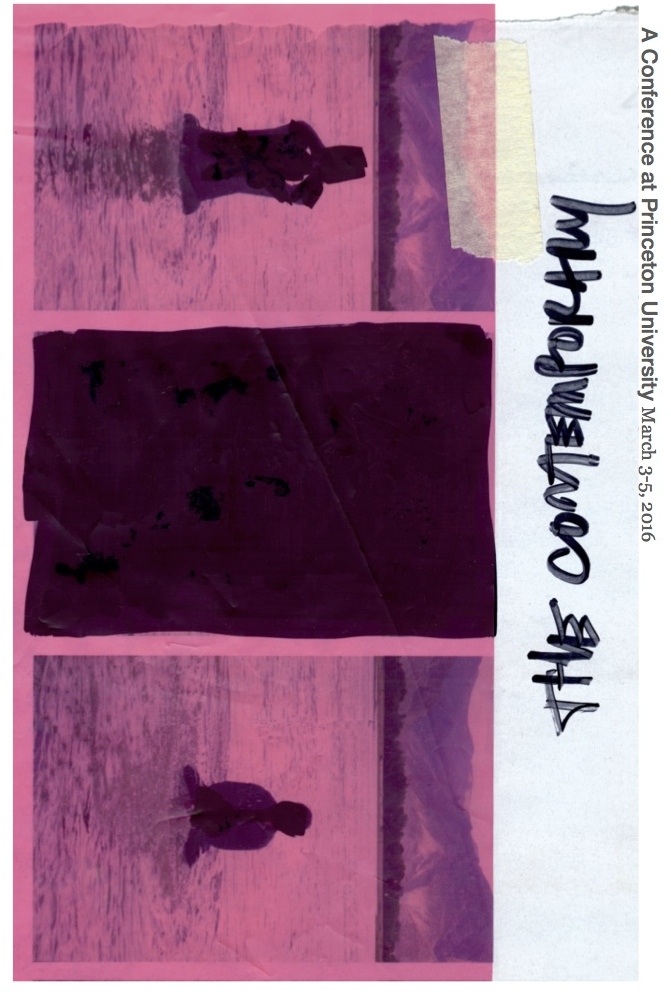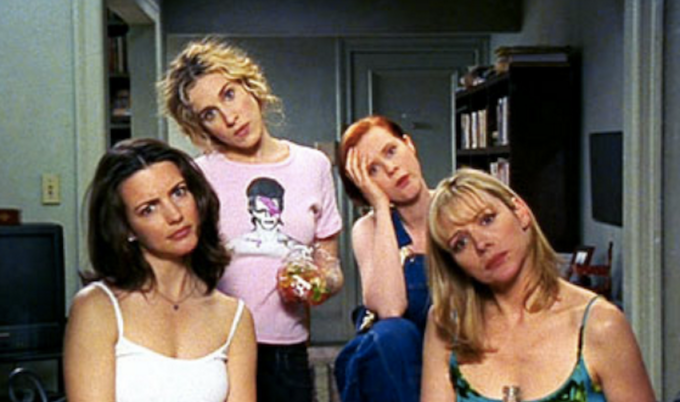The Hallyu Project
On April 6, 2018, WJSN, a Korean girl group, performed a traditional Indian dance with fake mustaches on an episode of TvN's Super TV. The members attempted to make a fun and entertaining dance routine with exaggerated gestures and ethnic representations of Indian men. After the show aired, a number of overseas fans found the dance insensitive to Indian traditions and expressed their concerns in Instagram posts, calling for the cancellation of WJSN. Not only was the criticism directed to the group, but fans also pointed out racist representations prevalent in Korean media in general. An Instagram user @knjseuphoria, for instance, argues that "South Asian/Indian culture [is] constantly being reduced to a joke on Korean TV."1 Since its glamourous and provocative emergence worldwide, Hallyu (Korean wave) rapidly flows out towards the world, only to face the backflow with painful yet acute reactions. Blackface skits, racist comments, and ethnic misrepresentations in Korean media draw the attention of Kpop fans. As such, South Korean society faces mounting criticisms from global stakeholders of Hallyu, including Kpop fans, entertainment workers, and academic researchers.
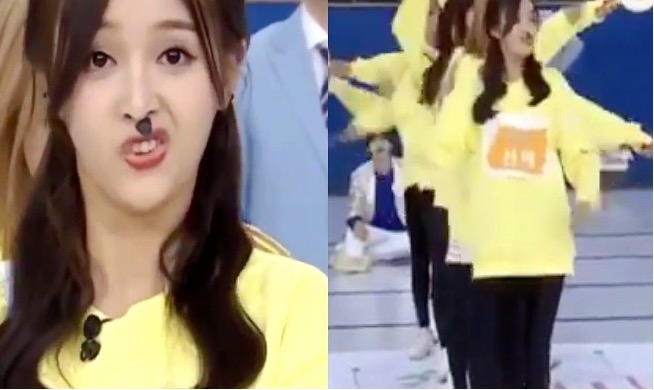
In accordance with its global popularity, a wide range of regional case studies of Hallyu have emerged, which typically examine how foreign fans and fandom communities use Hallyu to negotiate their own cultural identities in their local settings. In these studies, Hallyu is still represented as a one-sided, top-down cultural exportation from South Korea to non-Korean regions. However, the global localization of Hallyu forces Koreans to face cultural, racial, and ethnic Others, and these scattered, radically different receptors around the world also equally contribute to the contemporary construction of Hallyu.
This essay examines the conceptualization of Hallyu in two Korean television audition programs, Super Star K and Star Audition: The Great Birth (hereafter The Great Birth), in early 2010s South Korea. These early 2010s audition programs strongly promoted nationalist pride in the Hallyu business, especially in their selection of potential Kpop stars as exemplary figures of Korean culture for a global market. However, these globalizing projects tended to include a variety of non-Korean subjects and social minorities, such as foreign nationals, members of the Korean diaspora, and multiethnic Koreans within its most nationalist narrative. Ironically, these non-Korean subjects play a critical role in revealing the discriminatory nature of Hallyu discourse and the Korean dream opposing the original intention of the audition programs. In this sense, while Hallyu has been criticized as "cultural imperialism" or an "invasion of Korean culture,"2 an inverse penetration into the everyday practices of Koreans occurs as non-Korean stakeholders (rather than "consumers") across the world disrupt the notion of Koreanness as an ethnic marker of Hallyu.
The Narrative of Hallyu: Korean Audition Programs
Why audition programs? In South Korean media, Hallyu has been aligned with economic and national pride and described in aggressive and competitive language. For instance, the headlines of Korean newspapers often describe Hallyu as a "weapon" to survive in worldwide competition, and Kpop stars as "warriors."3 The ultimate goal of Hallyu is paralleled with establishing the national pride of South Korea as munhwa gangguk [culturally strong nation],4 proving its cultural competitiveness throughout the world. In this accounting, culture is ranked and numbered, just as audition programs decide a winner and a loser. Such rhetoric explains why the audition program is the most effective platform to distribute ideal narratives of Hallyu (since there are "better" performers and "winners") for domestic consumption. Considering the colonial history and division between Koreas in the Cold War era, Hallyu has provided a new opportunity for Koreans to erase the distressing and shameful memories of national traumas by demonstrating a new positive, powerful image of South Korea as a worldwide cultural leader.
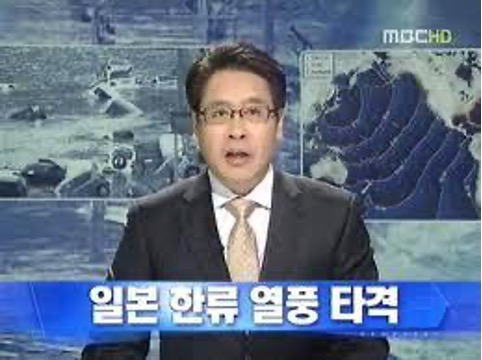
The early 2010s, when Kpop audition programs gained great popularity, was an important turning point for the Hallyu industry. Under the regime of President Lee Myung Bak, Hallyu became a manifestation of the country's emerging "soft power" to demonstrate the "superiority" of South Korean culture in front of both global and domestic populations.5 The government actively promoted Hallyu as a source of national pride as well as a new method of cultural diplomacy that could potentially contribute to the national economy.
Even though Kpop depends on what John Lie calls "the star factory or incubation system," in which entertainment agencies discover and educate young talents through harsh and competitive multi year training, these audition programs emphasize the motto of "fair competition" where anyone can be a Kpop star regardless of age, gender, or ethnicity. The audition programs emphasize individual, private stories to create characters for the show. This resonates well with the nature of Hallyu in that it is the industry where "young performers [have] been integrated into national effort by making them acceptable to all sectors of society."6 Kpop audition programs in the 2010s, under the government cultural policy and the global popularity of Kpop, thus began to open up their candidate pool beyond South Korea, initially marketing themselves as global auditions to reformulate the national identity of South Korea as a global cultural hub.
Super Star K, a Model Narrative of Hallyu
Super Star K (Mnet) created a national audition craze from its South Korean launch in 2009 until its seventh and final season in 2015. It reached a 10% viewing share for the first time in South Korean cable programming, and Super Star K Season 2, which aired in 2010, recorded an instantaneous viewer share of 21.1% and received one million real-time text votes counted during live broadcasts in the final stage.7 Notably, the number of participants in the domestic and overseas preliminary rounds before the full-fledged audition was also remarkable; 710,000 participated in the first season in 2009, and 1.34 million participated in the second season when the program began to hold overseas auditions under the project of globalizing Kpop auditions.
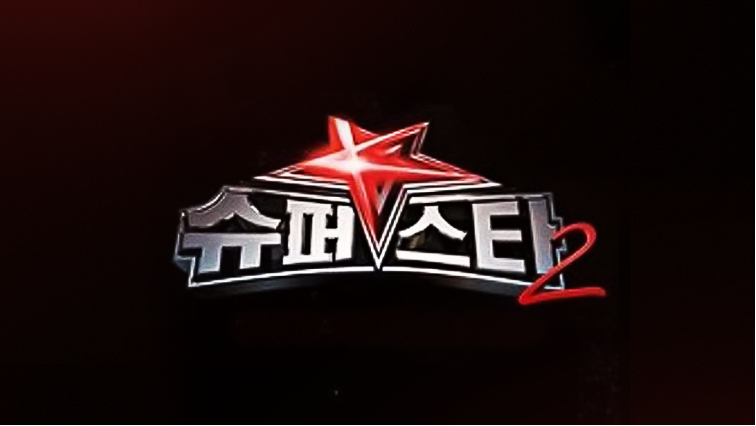
The number of overseas preliminary selections gradually expanded to a wide range of international cultural centers of Hallyu, such as Los Angeles, New York, Beijing, Tokyo, Osaka, London, Paris, Bangkok, São Paulo, Sydney, and others. This phenomenon depicts how foreign participants interested in Hallyu play an important role in demonstrating South Korea's global influence. It is a common structure that in the global pre-selection stage, the camera traces a long line of international participants waiting for an audition exclaiming, "hanguk saranghaeyo!" [I Love Korea!] or "hanguk choego!" [Korea is the Best!] and shouting the names of their favorite Kpop stars. The images of foreigners who are eager to participate in Korean auditions allow Korean viewers internalize national pride and importantly provide Koreans with a safe and non-threatening way to encounter others as their very presence indexes the global impact of Hallyu.
The highest portion of selected foreigners in the preliminary selection are from the Korean diaspora. Korean immigrants or overseas Koreans, often described in a derogatory term, geomeun meori oegugin (meaning "foreigner with black hair" therefore "fake Koreans"), demonstrate contradictory characteristics in the eyes of Koreans: they are not "genuine" Koreans but look like "genuine" Koreans, which makes them less threatening and more suitable figures for South Koreans to navigate foreignness and familiarity simultaneously. They are also the ideal example demonstrating the power of Hallyu in expressingSouth Korea's culturally prestigious position in the world, for Koreans now witness overseas Koreans returning to the mother nation (moguk) to grab an opportunity, implying a shift in the global power relationship.
The narrative of the Korean diaspora made Super Star K Season 2 the most popular season of all, as its viewing rate surpassed all other programs at that time and generated numerous memes and fandoms. The rivalry between the final top 2, Huh Gak and John Park, intrigued young South Korean viewers. From the beginning of Season 2, the program situated these two candidates as rivals based on their distinctive backgrounds as a major narrative. John Park, a Korean American, was introduced as a successful young man from a middle-upper class family, who studied Economics at Northwestern University and even made the top 24 on American Idol. This was immediately followed by the introduction of Huh Gak, a young South Korean man who was forced to abandon his dream of becoming a singer due to his family's financial crises and worked as a plumber. The program continuously contrasts the two participants: a good-looking young Korean American man with a great personality versus a working class and average-looking Korean guy with great talent. This rivalry, however, is strictly limited to "fair competition" while highlighting the friendship between the candidates.8
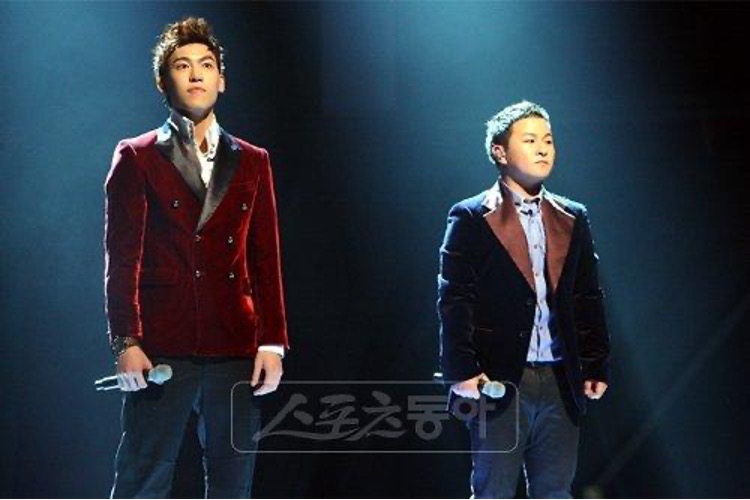
In the final episode, Huh Gak won dramatically over John Park in viewer voting and became the hero of a miraculous story. Many young Korean viewers interviewed noted that they voted for Huh Gak because "he looks like me, an ordinary Korean."9 Huh Gak's triumph symbolized a South Korean victory over the U.S., the world's most powerful country, represented by John Park. The triumphant narrative of a Korean man's win over a member of the Korean diaspora, however, ironically demonstrates that the idealization of the US is still recognizable in the show. For instance, Korean participants often envy Korean Americans for their fluency in English. The show often makes fun of some Korean judges or participants for their awkward English, especially when they continuously apologize for their lack of English skill when communicating with English-speaking participants. Also, singing English-language pop songs on stage is a regularly given weekly mission to all participants.
The Great Birth, the (Im)possibility of the Korean Dream
The Great Birth launched two weeks after the final episode of Super Star K Season 2, produced by MBC national broadcasting company in 2010. Viewer share reached 21.8% and the show received more than 170 million votes in the final stage, approximately 40 million more than Super Star K Season 2.10 The Great Birth underscored the global demand of Kpop even more than Super Star K through the mission of globalizing Kpop. In addition to global preliminary selections in major cities like Super Star K, The Great Birth utilized YouTube as a platform for hopeful Kpop stars to upload their own video applications. The show host repeatedly expressed surprise at the enthusiastic responses from thousands of foreign applicants. These applicants from approximately 50 countries, including Indonesia, Vietnam, Brazil, Chile, Romania, Norway, Israel, Finland, and many others eagerly highlighted their love for Kpop. The program also allowed the global audience outside South Korea to participate in online voting.11
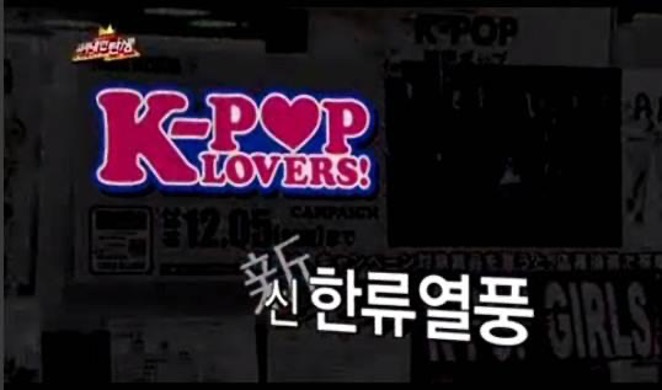
The Great Birth skillfully combined Korean customs and mindset within the survival narrative of an audition format. It developed a mentor system to differentiate it from other audition programs. After elimination, five judges, who are also renowned Korean singers, changed their roles into mentors and each chose four mentees for training. This mentor system resembles the top-down, competitive South Korean education system and its cultural respect for elders as authorities. Mentors, for instance, not only directed their mentee's musical performance but also taught them Korean culture and manners in a parent-like role. Those participants who showed humbleness and respect for their mentors gained popularity from viewers whereas those who exhibited too much self-confidence or aggressive manners became the target of criticism by the viewers.12 Knowledge in Korean culture and language was apparently emphasized by the program. In this context, the foreignness of non-Korean candidates was considered something to be eliminated or reduced through mentoring. For example, the show repeatedly depicted unclear pronunciation, poor language proficiency, and foreign accents in Korean language as weaknesses of non-Korean participants. They were required to learn and understand Korean culture in depth to qualify as the next Kpop star.
The show frequently depicted the narrative of overseas Koreans' discriminatory experiences. Paul Kim, who had reached the top 24 on American Idol stated, "Here in the states, there are not many Asian singers. It's been rough. I love music so much. But being an Asian, having an Asian face, you know, you don't see a whole lot of artists here. So, I want to go to Korea."13 Here, the Great Birth differed from the way Super Star K depicts the US; while Super Star K maintained the attitude of idealizing the U.S. as a superior cultural power through the narrative of overseas Koreans like John Park, The Great Birth more actively emphasized South Korea as a fair and hopeful country where even Americans can make their dream come true. Similarly, Korean Chinese [Joseonjok] Baek Chung Kang, the winner of The Great Birth Season 1, also stated that "even though we live in China, we don't have many opportunities because we are minorities" in describing his desperate situation in Yanbin as a nightclub singer.14 The Korean Dream narrative of a Korean Chinese young man through the tutelage of his mentor Kim Tae Won became the main narrative of The Great Birth. Baek's Korean Dream was accomplished in the final episode as he encouraged his fellow Korean Chinese not to give up their dreams, and his mother, an immigrant worker in a restaurant, thanked South Koreans for their generous support.15 However, when foreignness becomes uncontrollable or threatening, non-Korean subjects, especially those from countries considered less-developed than South Korea, are immediately turned into objects of hate and rejection. Although Baek benefited from a powerful South Korean fandom, he had to face angry fans when he announced that he would change his Korean talent agency to a Chinese one to start his career in China in 2011. It was considered a betrayal against Koreans who had supported his Korean Dream. The condemnation intensified when an unrelated crime — a Korean Chinese man murdered a young Korean woman — occurred in 2012. The public, based on xenophobia, directed blame for the crime on Baek as a representative successful Korean Chinese figure and accused him of being an "ungrateful foreigner," "murderer," or "dirty ttennom" (derogatory term for Chinese man) and quickly erased his Korean side.16 Baek's case demonstrates that the otherness in Hallyu discourse is sometimes only welcomed as long as it is properly governed in the audition program's narrative reaffirmation of a positive image for South Korea. Otherwise, non-Korean subjects were reduced to "parasites" who took advantage of the global capital of Kpop.
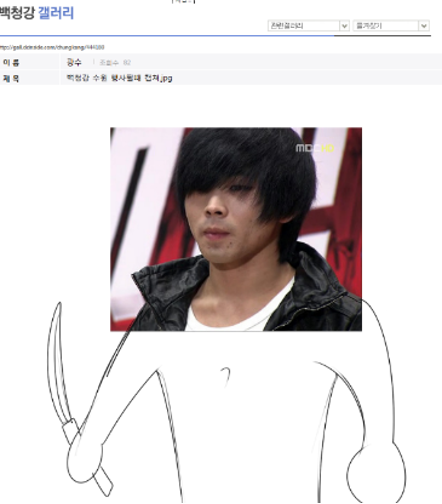
As Baek's case revealed xenophobia and ethnocentrism among South Koreans, the image of "Koreanness" is constantly negotiated during and after the show. While South Korean audition programs employ non-Korean subjects such as Baek to build a positive image of Hallyu, these programs became contradictory especially when their values, narratively developed as fairness, openness, and equality, are distended in attempts to avoid and tame South Korea's racial and ethnic tension by policing any ungoverned bodies or underrepresented groups.
What Happens When the Audition Is Over?
Even though Super Star K and The Great Birth revealed the xenophobia and ethnocentrism present in South Korea, they also illuminated diverse minority groups barely exposed in South Korean media and provided them with opportunities to represent themselves. Because audition programs seek out scandalous and sensational stories, the life narratives of LGBTQ participants, interracial subjects, and even sex workers are continuously incorporated into the grand narratives of the programs, proving that the programs are open to "anybody with passion and a dream," a tension expressed in the desire to make multiple subject visible while also engaging in a process to find the "best representative." Due to the success of Kpop audition programs in the 2010s, this tendency to include minority narratives has continued in subsequent South Korean audition programs. For example, Lee Michelle in Survival Audition Kpop Star Season 1 — the first Kpop audition program where a female participant won — shared her experience of discrimination as an Afro-Korean interracial subject, challenging the notion of South Korea as a racially homogenous nation. Lee appeared in front of the judges and introduced herself — unexpectedly, in terms of the show's narrative framing — in fluent Korean, saying "you guys must be surprised?" with a playful grin.17 This subversive moment illustrates that the participant negated the judges' misconceptions based on her "non-Korean" appearance and asserted her own voice as a citizen of South Korea.
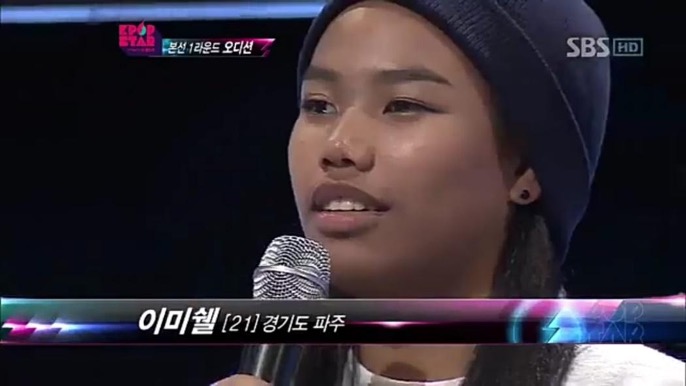
These stories of social minorities temporarily succeeded in gaining attention and sympathy from Korean viewers, yet the narratives still do not point out real problems of systemic discrimination and do not offer the audience an opportunity to reflect on their own attitudes in their evaluation of participants. It is not uncommon that non-conventional participants like Baek or Lee easily became an object of hate speech due to their ethnic and racial background by South Koreans after the audition programs conclude. However, these participants prompted Koreans to reckon with racism by resisting the role of silent victim by constantly claiming their spaces in South Korean media. In this context, I argue that 2010s audition programs initiated a limited yet vital opportunity for South Koreans to manage differences and unfamiliarity in a dialogue with the global Hallyu community. The subsequent popularity of South Korean variety shows exclusively inviting non-Korean nationals such as Non-Summit: Borderless Young Men Club (2014), My Neighbor, Charles (2015), Welcome, First Time in Korea? (2017), South Korean Foreigners (2018), and United Fathers across the Ocean! (2022), demonstrates that as Hallyu's cultural influence has expanded, South Koreans have concomitantly become more interested in how they are reflected in the eyes and through the voices of non-Korean subjects.
Through its comprehensive and critically-reflective contemporaneity, Hallyu often prompts South Koreans to confront both external and internal others. Super Star K and The Great Birth suggest that Hallyu was never exclusively "a Korean thing"; rather, it operates within the cacophony of noisy actors across the world to generate new cross-border discourses. Following the WJSN incident and Kpop related backlash, South Koreans gradually realized that they are, and will be, held accountable for racism and xenophobia in the midst of the Korean wave. Despite unresolved discomforts, it is still momentous to observe where Hallyu flows to the next shore in wild waves since its "great" birth.
Hyo Kyung Woo (@hyowooo) is Assistant Professor of English at Edward Waters University. She is working on a book manuscript Korean Englishes, Uneven Asias, and Transpacific Circulation, 1895-1945.
References
- Twitter, quoted in Ikran Dahir and Kassy Cho, "Fans Are Cancelling This Korean Girl Group After They Did a Traditional Indian Dance," BuzzFeed News May 2, 2018. https://www.buzzfeed.com/ikrd/k-pop-fans-are-saying-this-girl-group-mocked-a-traditional. [⤒]
- Criticism of Hallyu for its cultural imperialism was mainly raised in other Asian countries. On the contrary, Hallyu is sometimes considered a postcolonial reaction when imported to traditional cultural centers, such as the US See Xiaowei Huang's "Korean Wave: The Popular Culture, Comes as Both Cultural and Economic Imperialism in East Asia," Asian Social Science 5, no. 8 (2009): 123-130. [⤒]
- "The Second Invasion of Girl Groups to Japan" (The Chosun Ilbo, August 26, 2010); "New Korean Wave Occupies Europe beyond Asia" (Maeil Ilbo, June 28, 2011); "Hallyu Leaves a Heavy Blow at Hong Kong" (Hankook Ilbo, August 14, 2012). [⤒]
- This article follows the Revised Romanization of Korean system, released by the [South Korean] Ministry of Culture and Tourism in Proclamation No. 2000-8. [⤒]
- For details on South Korean government policy on hallyu, see Tae Young Kim and Dal Yong Jin, "Cultural Policy in the Korean Wave: An Analysis of Cultural Diplomacy Embedded in Presidential Speeches," International Journal of Communication 10 (2016): 21.[⤒]
- John Walsh, "Hallyu as a Government Construct: The Korean Wave in the Context of Economic and Social Development," in The Korean Wave (New York: Palgrave Macmillan, 2014), 22. [⤒]
- Taehong Yun, "The Genre Study of Korean Audition Reality Show: Super Star K," thesis, (Ewah Woman's University, 2015), v.[⤒]
- In the final stage, Huh Gak addressed his thoughts on John Park as following: "I vividly remember the first time I saw John Park. He was better than me in every way. . . John has been my biggest companion, like a brother. But today, I am going to face him and will not lose. Now he is my biggest rival." Super Star K. Season 2, episode 14. Directed by Yongbeom Kim, aired October 22, 2010, on Mnet.[⤒]
- Super Star K, Season 2, episode 13, aired October 15, 2010. [⤒]
- Seyoon Kang, "The Investigation into the Clue to Lead in Success as the TV Audition Program in Reality [오디션 리얼리티 프로그램의 성공요인 연구: 슈퍼스타K와 위대한 탄생의 서사구조 분석]," thesis, (Sungkyunkwan University, 2012), 17.[⤒]
- Many Hallyu studies point out that the use of social media, particularly YouTube, is an important characteristic of contemporary Kpop culture. This fan-created culture, such as "cover dance," significantly contributed to the rapid growth of Kpop in the global market. See Dal Yong Jin, New Korean Wave: Transnational Cultural Power in the Age of Social Media, 2016. [⤒]
- For example, 18-year-old singer Shayne Orok of Toronto, Canada, made the final three. He attracted Korean viewers for his friendly attitudes towards his Korean mentor and peers, in phrases like, "hyeongnim [big brother], saranghaeyo [I love you]." The Great Birth, Season 1, episode 17. Directed by Changman Suh, aired March 25, 2011, on MBC. [⤒]
- The Great Birth, Season 1, episode 4, aired December 17, 2010. [⤒]
- The Great Birth, Season 1, episode 4, aired December 17, 2010. [⤒]
- The Great Birth, Season 1, episode 26, aired May 27, 2011. [⤒]
- "I Also Share Korean Blood. . . Cold Glare on 'Joseonjok' Hurts My Feelings." Dong-A Ilbo May 7, 2013. [⤒]
- Kpop Star, Season 1, episode 7, aired May 11, 2012.[⤒]



